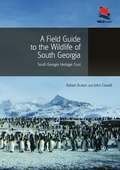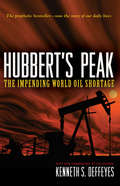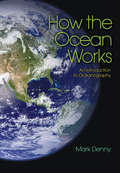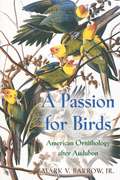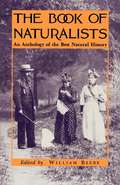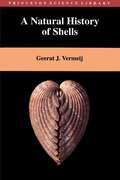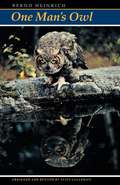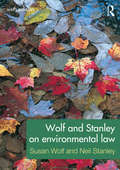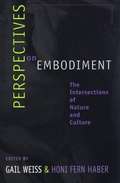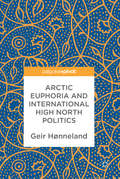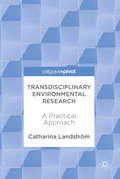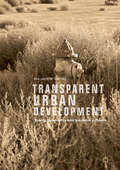- Table View
- List View
A Field Guide to the Wildlife of South Georgia (PDF)
by Robert Burton John CroxallSouth Georgia is rich in wildlife and spectacular scenery, and it is a prime destination spot on most Antarctic tours. This beautifully illustrated field guide depicts the birds, mammals, insects, flowering plants, and other vegetation found in this unique part of the world. It features 368 full-color photographs of more than 180 species, including 65 species of birds, 20 species of sea mammals, nearly 60 species of insects, and more than 40 species of flowering and nonflowering plants. Detailed species accounts describe key identification features, with information on status, behavior, threats, and distribution. This one-of-a-kind photographic guide also includes introductory chapters on South Georgia's geography, climate, ecology, and conservation.Features 368 photos of more than 180 species Covers birds, sea mammals, insects, and plants Provides detailed species accounts Includes chapters on geography, climate, ecology, and conservation The only photographic field guide to focus specifically on South Georgia
A Visitor's Guide to South Georgia: Second Edition (PDF)
by Sally Poncet Kim CrosbieThis is the only illustrated guide specifically tailored to the needs of visitors to this remote and captivating part of the world, and it is the ideal book for armchair naturalists.A Visitor's Guide to South Georgia features hundreds of color photographs of the diverse wildlife and breathtaking scenery to be found at this unique tourist destination. It includes extensive and up-to-date coverage of all wildlife groups--from albatrosses and petrels to seals and penguins--as well as color maps and detailed information for the 23 key visitor sites. This stunning photographic guide describes the history, geology, and culture of South Georgia. It also provides a checklist of all fauna and flora as well as valuable tips for visitors to the islands, and the book's wirebound format enables it to fold out flat for easy use in a water-protective holder.Features hundreds of photos Covers all wildlife groups Includes maps and information for the 23 key visitor sites Describes South Georgia's unique history, geology, and culture Provides a checklist of all fauna and flora Gives valuable tips for visitors
Hubbert’s Peak: The Impending World Oil Shortage
by Kenneth S. DeffeyesIn 2001, Kenneth Deffeyes made a grim prediction: world oil production would reach a peak within the next decade--and there was nothing anyone could do to stop it. Deffeyes's claim echoed the work of geophysicist M. King Hubbert, who in 1956 predicted that U.S. oil production would reach its highest level in the early 1970s. Though roundly criticized by oil experts and economists, Hubbert's prediction came true in 1970. In this updated edition of Hubbert's Peak, Deffeyes explains the crisis that few now deny we are headed toward. Using geology and economics, he shows how everything from the rising price of groceries to the subprime mortgage crisis has been exacerbated by the shrinking supply--and growing price--of oil. Although there is no easy solution to these problems, Deffeyes argues that the first step is understanding the trouble that we are in.
How the Ocean Works: An Introduction to Oceanography
by Mark DennyThe world's oceans account for roughly 71 percent of the planet's surface and 99 percent of its livable volume. Any study of this huge habitat requires a solid foundation in the principles that underlie marine biology and physical and chemical oceanography, yet until now undergraduate textbooks have largely presented compilations of facts rather than explanations of principles. How the Ocean Works fills this gap, providing a concise and accessible college-level introduction to marine science that is also ideal for general readers. How are winds and currents driven? What is the dilemma of the two-layered ocean? Mark Denny explains key concepts like these in rich and fascinating detail. He explores early scientific knowledge of oceans, photosynthesis, trophic interactions and energy flow, and the impacts of human activities on marine and atmospheric systems. Focusing each chapter on a major topic and carefully explaining the principles and theory involved, Denny gives readers the conceptual building blocks needed to develop a coherent picture of the living ocean. How the Ocean Works is an indispensable resource that teaches readers how to think about the ocean--its biology, mechanics, and conservation. Provides a concise, up-to-date introduction to marine science Develops the conceptual basis needed to understand how the ocean works Explains fundamental principles and theory Includes color illustrations and informative diagrams Serves as a college textbook and a reference for general readers
Tropical Ecology
by John KricherThis full-color illustrated textbook offers the first comprehensive introduction to all major aspects of tropical ecology. It explains why the world's tropical rain forests are so universally rich in species, what factors may contribute to high species richness, how nutrient cycles affect rain forest ecology, and how ecologists investigate the complex interrelationships among flora and fauna. It covers tropical montane ecology, riverine ecosystems, savanna, dry forest--and more. Tropical Ecology begins with a historical overview followed by a sweeping discussion of biogeography and evolution, and then introduces students to the unique and complex structure of tropical rain forests. Other topics include the processes that influence everything from species richness to rates of photosynthesis: how global climate change may affect rain forest characteristics and function; how fragmentation of ecosystems affects species richness and ecological processes; human ecology in the tropics; biodiversity; and conservation of tropical ecosystems and species. Drawing on real-world examples taken from actual research, Tropical Ecology is the best textbook on the subject for advanced undergraduates and graduate students. Offers the first comprehensive introduction to tropical ecology Describes all the major kinds of tropical terrestrial ecosystems Explains species diversity, evolutionary processes, and coevolutionary interactions Features numerous color illustrations and examples from actual research Covers global warming, deforestation, reforestation, fragmentation, and conservation The essential textbook for advanced undergraduates and graduate students Suitable for courses with a field component Leading universities that have adopted this book include: Biola University Bucknell University California State University, Fullerton Colorado State University - Fort Collins Francis Marion University Michigan State University Middlebury College Northern Kentucky University Ohio Wesleyan University St. Mary's College of Maryland Syracuse University Tulane University University of California, Santa Cruz University of Central Florida University of Cincinnati University of Florida University of Missouri University of New Mexico University of North Carolina at Chapel Hill University of the West Indies
A Natural History of Amphibians (PDF)
by Robert C. Stebbins Nathan W. CohenThis is a book for all readers who want to learn about amphibians, the animal group that includes frogs, toads, salamanders, and caecilians. It draws on many years of classroom teaching, laboratory experience, and field observation by the authors. Robert Stebbins and Nathan Cohen lead readers on a fascinating odyssey as they explore some of nature's most interesting creatures, interspersing their own observations throughout the book. A Natural History of Amphibians can serve as a textbook for students and independent learners, as an overview of the field for professional scientists and land managers, and as an engaging introduction for general readers. The class Amphibia contains more than 4,500 known living species. New species are being discovered so rapidly that the number may grow to more than 5,000 during our lifetimes. However, their numbers are being rapidly decimated around the globe, largely due to the encroachment of humans on amphibian habitats and from growing human-caused environmental pollution, discussed at length in the final chapter. The authors focus our attention on the "natural history" of amphibians worldwide and emphasize their interactions with their environments over time: where they live; how they reproduce; how they have been affected by evolutionary processes; what factors will determine their destinies over time. Through the experienced eyes of the authors, who are skilled observers, we come to see and understand the place of amphibians in the natural world around us.
A Passion for Birds: American Ornithology after Audubon (PDF)
by Mark BarrowIn the decades following the Civil War--as industrialization, urbanization, and economic expansion increasingly reshaped the landscape--many Americans began seeking adventure and aesthetic gratification through avian pursuits. By the turn of the century, hundreds of thousands of middle-and upper-class devotees were rushing to join Audubon societies, purchase field guides, and keep records of the species they encountered in the wild. Mark Barrow vividly reconstructs this story not only through the experiences of birdwatchers, collectors, conservationists, and taxidermists, but also through those of a relatively new breed of bird enthusiast: the technically oriented ornithologist. In exploring how ornithologists struggled to forge a discipline and profession amidst an explosion of popular interest in natural history, A Passion for Birds provides the first book-length history of American ornithology from the death of John James Audubon to the Second World War. Barrow shows how efforts to form a scientific community distinct from popular birders met with only partial success. The founding of the American Ornithologists' Union in 1883 and the subsequent expansion of formal educational and employment opportunities in ornithology marked important milestones in this campaign. Yet by the middle of the twentieth century, when ornithology had finally achieved the status of a modern profession, its practitioners remained dependent on the services of birdwatchers and other amateur enthusiasts. Environmental issues also loom large in Barrow's account as he traces areas of both cooperation and conflict between ornithologists and wildlife conservationists. Recounting a colorful story based on the interactions among a wide variety of bird-lovers, this book will interest historians of science, environmental historians, ornithologists, birdwatchers, and anyone curious about the historical roots of today's birding boom.
The Naturalist in Britain: A Social History
by David Elliston AllenAt once a major resource for historians of science and an excellent introduction to natural history for the general reader, David Allen's The Naturalist in Britain established a precedent for investigating natural history as a social phenomenon. Here the author traces the evolution of natural history from the seventeenth to the early twentieth centuries, from the "herbalizings" of apprentice apothecaries to the establishment of national reserves and international societies to the emergence of natural history as an organized discipline. Along the way he describes the role of scientific ideas, popular fashion, religious motivations, literary influences, the increase of leisure time and disposable income, and the tendency of like-minded persons to form clubs. His comprehensive and entertaining discussion creates a vibrant portrait of a scientific movement inextricably woven into a particular culture.
Where Have All the Birds Gone?: Essays on the Biology and Conservation of Birds That Migrate to the American Tropics
by John Terborgh"Things are going wrong with our environment," writes John Terborgh, "even the parts of it that are nominally protected. If we wait until all the answers are in, we may find ourselves in a much worse predicament than if we had taken notice of the problem earlier. By waiting, one risks being too late; on the other hand, there can be no such thing as being too early." Terborgh's warnings are essential reading for all who care about migratory birds and our natural environment. Why are tropical migrant species disappearing from our forests? Can we save the birds that are left? Terborgh takes a more comprehensive view of migratory birds than is usual--by asking how they spend their lives during the half-year they reside in the tropics. By scrutinizing ill-planned urban and suburban development in the United States and the tropical deforestation of Central and South America, he summarizes our knowledge of the subtle combination of circumstances that is devastating our bird populations. This work is pervaded by Terborgh's love for the thrushes, warblers, vireos, cuckoos, flycatchers, and tanagers that inhabited his family's woodland acreage while he was growing upbirds that no longer live there, in spite of the preservation of those same woods as part of a county park. The book is a tour of topics as varied as ecological monitoring, the plight of the Chesapeake wetlands, the survival struggle of Central American subsistence farmers, and the management of commercial forests.
The Book of Naturalists: An Anthology of the Best Natural History
by William BeebeAnyone curious about animals, nature, or the history of biology will find much of interest in this ample and varied collection. Reflecting his infectious enthusiasm for "the best natural history," Beebe's personal assortment of favorites includes excerpts from massive sources, such as Audubon and Darwin, and intriguing pieces from lesser known authors most of us would not normally encounter. Arranged in chronological order, the small masterpieces here range from Aristotle to Rachel Carson. Each of them is introduced by an incisive and sometimes humorous description of its author.
A Natural History of Shells (PDF)
by Geerat J. VermeijGeerat Vermeij wrote this "celebration of shells" to share his enthusiasm for those supremely elegant creations and what they can teach us about nature. Most popular books on shells emphasize the identification of species, but Vermeij uses shells as a way to explore major ideas in biology. How are shells built? How do they work? How did they evolve? The author lucidly and charmingly demonstrates how shells give us insights into the lives of animals in our own day as well as in the distant geological past.
One Man's Owl: (Abridged Edition)
by Bernd HeinrichThis engaging chronicle of how the author and the great horned owl "Bubo" came to know one another over three summers spent in the Maine woods--and of how Bubo eventually grew into an independent hunter--is now available in an edition that has been abridged and revised so as to be more accessible to the general reader.
Exploring Environmental Issues: An Integrated Approach
by David D. KempGlobal warming, ozone depletion, drought, acid rain - their causes are viewed as extraordinarily complex; their effects are assumed catastrophic. Exploring Environmental Issues provides a key to understanding our potential crisis. The concise, introductory text presents a review of current environmental issues using a geographical approach that stresses the interrelationships between environment and societies. This user-friendly volume is an essential book for students and all who are concerned with the nature of contemporary environmental issues. Information is presented in a refreshing manner utilising over 170 figures and 50 photographs. Global boxed case studies are used throughout to highlight and explore issues in more detail. The text also contains discussion points, annotated further reading and an extensive glossary.
Exploring Environmental Issues: An Integrated Approach (PDF)
by David D. KempGlobal warming, ozone depletion, drought, acid rain - their causes are viewed as extraordinarily complex; their effects are assumed catastrophic. Exploring Environmental Issues provides a key to understanding our potential crisis. The concise, introductory text presents a review of current environmental issues using a geographical approach that stresses the interrelationships between environment and societies. This user-friendly volume is an essential book for students and all who are concerned with the nature of contemporary environmental issues. Information is presented in a refreshing manner utilising over 170 figures and 50 photographs. Global boxed case studies are used throughout to highlight and explore issues in more detail. The text also contains discussion points, annotated further reading and an extensive glossary.
Wolf And Stanley On Environmental Law
by Susan Wolf Neil StanleyWritten with real clarity by authors teaching and researching in the field, Wolf and Stanley on Environmental Law offers an excellent starting point for both law and non-law students encountering this diverse and controversial subject for the first time. Topics covered include administration and enforcement, waste management, EU environmental law, pollution control, environmental permitting, contaminated land, environmental torts and private regulation. The book is supported by a range of learning features designed to help students: Consolidate your learning: Chapter learning objectives and detailed summaries clarify and highlight key points Understand how the law works in practice: #65533;Law in Action#65533; features demonstrate the application of pollution control law Plan your research: Detailed end of chapter further reading sections outline articles, books and online resources that provide next steps for your research This sixth edition has been updated and revised to take into account recent developments in the subject, including coverage of the Environmental Permitting (England and Wales) Regulations 2010; developments in the Environment Agency enforcement and sanctions policy documents; and updates relating to the defence of statutory authority in the tort of private nuisance. Suitable for students of environmental law and the wider environmental studies, Wolf and Stanley on Environmental Law is a valuable guide to this wide-ranging subject. Susan Wolf is Principal Lecturer in Law at the University of Northumbria. Neil Stanley is Lecturer in Law at the University of Leeds.
Wolf And Stanley On Environmental Law (PDF)
by Susan Wolf Neil StanleyWritten with real clarity by authors teaching and researching in the field, Wolf and Stanley on Environmental Law offers an excellent starting point for both law and non-law students encountering this diverse and controversial subject for the first time. Topics covered include administration and enforcement, waste management, EU environmental law, pollution control, environmental permitting, contaminated land, environmental torts and private regulation. The book is supported by a range of learning features designed to help students: Consolidate your learning: Chapter learning objectives and detailed summaries clarify and highlight key points Understand how the law works in practice: #65533;Law in Action#65533; features demonstrate the application of pollution control law Plan your research: Detailed end of chapter further reading sections outline articles, books and online resources that provide next steps for your research This sixth edition has been updated and revised to take into account recent developments in the subject, including coverage of the Environmental Permitting (England and Wales) Regulations 2010; developments in the Environment Agency enforcement and sanctions policy documents; and updates relating to the defence of statutory authority in the tort of private nuisance. Suitable for students of environmental law and the wider environmental studies, Wolf and Stanley on Environmental Law is a valuable guide to this wide-ranging subject. Susan Wolf is Principal Lecturer in Law at the University of Northumbria. Neil Stanley is Lecturer in Law at the University of Leeds.
Perspectives On Embodiment: The Intersections Of Nature And Culture (PDF)
by Gail Weiss Honi F. HaberFirst published in 1999. Routledge is an imprint of Taylor & Francis, an informa company.
Arctic Euphoria and International High North Politics
by Geir HønnelandThis pivot describes the ups and downs of Norwegian High North politics since the end of the Cold War. It considers how political interest in the Arctic has been growing rapidly in the international community as states stake their claim to areas of the continental shelf in the Arctic Ocean, and focuses on Russia’s actions, as the Arctic state with the longest shoreline and the only one outside NATO. The author argues that among the Western countries, Norway has the most extensive experience in tackling Russia in the Arctic, and the neighbourhood with the Russian Bear invariably shapes foreign policy, notably in matters of security, and how foreign policy concerns are intertwined with economic motives, be that hopes of access to the big Russian market or to the oil and gas fields on the Russian Arctic shelf. To achieve the combined goal of security and business, the Norwegian Government has regularly orchestrated “Arctic waves” to direct the attention of local, national and international politicians and businesses to the alleged opportunities of the North. In this book, the author takes us through “the Great Barents Awakening” of the 1990s, “the Great High North Enchantment” of the early 2000s and recent years’ “Arctic wave” in Norwegian foreign policy.
Arctic Euphoria and International High North Politics
by Geir HønnelandThis pivot describes the ups and downs of Norwegian High North politics since the end of the Cold War. It considers how political interest in the Arctic has been growing rapidly in the international community as states stake their claim to areas of the continental shelf in the Arctic Ocean, and focuses on Russia’s actions, as the Arctic state with the longest shoreline and the only one outside NATO. The author argues that among the Western countries, Norway has the most extensive experience in tackling Russia in the Arctic, and the neighbourhood with the Russian Bear invariably shapes foreign policy, notably in matters of security, and how foreign policy concerns are intertwined with economic motives, be that hopes of access to the big Russian market or to the oil and gas fields on the Russian Arctic shelf. To achieve the combined goal of security and business, the Norwegian Government has regularly orchestrated “Arctic waves” to direct the attention of local, national and international politicians and businesses to the alleged opportunities of the North. In this book, the author takes us through “the Great Barents Awakening” of the 1990s, “the Great High North Enchantment” of the early 2000s and recent years’ “Arctic wave” in Norwegian foreign policy.
Transdisciplinary Environmental Research: A Practical Approach
by Catharina LandströmThis book explores the practice of transdisciplinary research through the narratives of different individuals taking part in a project investigating local water management. The research project ran for one year and brought seven university scientists together with seven local residents to explore relationships between water quantity, water quality, abstraction of water resources and how to reduce pollution.Landström presents three conversations that convey the experience of transdisciplinary practice in natural language in order to offer insights into the workings of a transdisciplinary Environmental Competency Group. The conversations highlight Environmental Competency Groups as tools enabling collaboration between knowledgeable individuals who do not share a common scientific vocabulary.Transdisciplinary Environmental Research will appeal to natural and social scientists interested in working collaboratively with each other and the general public on environmental research projects.
Transdisciplinary Environmental Research: A Practical Approach
by Catharina LandströmThis book explores the practice of transdisciplinary research through the narratives of different individuals taking part in a project investigating local water management. The research project ran for one year and brought seven university scientists together with seven local residents to explore relationships between water quantity, water quality, abstraction of water resources and how to reduce pollution.Landström presents three conversations that convey the experience of transdisciplinary practice in natural language in order to offer insights into the workings of a transdisciplinary Environmental Competency Group. The conversations highlight Environmental Competency Groups as tools enabling collaboration between knowledgeable individuals who do not share a common scientific vocabulary.Transdisciplinary Environmental Research will appeal to natural and social scientists interested in working collaboratively with each other and the general public on environmental research projects.
Transparent Urban Development: Building Sustainability Amid Speculation in Phoenix
by Benjamin W. StanleyThis book studies both the tangible benefits and substantial barriers to sustainable development in the city of Phoenix, Arizona. Utilizing mixed research methods to probe downtown Phoenix’s political economy of development, this study illustrates how non-local property ownership and land speculation negatively impacted a concerted public-private effort to encourage infill construction on vacant land. The book elaborates urban sustainability not only as a set of ecological and design prescriptions, but as a field needing increased engagement with the growth-based impetus, structural economic forces, and political details behind American urban land policy. Demonstrating how land use policies evolved in relation to Phoenix’s historical dependence on outside investment, and are now interwoven across jurisdictional scales, the book concludes by identifying policy intervention points to increase the sustainability of Phoenix’s development trajectory.
Transparent Urban Development: Building Sustainability Amid Speculation in Phoenix
by Benjamin W. StanleyThis book studies both the tangible benefits and substantial barriers to sustainable development in the city of Phoenix, Arizona. Utilizing mixed research methods to probe downtown Phoenix’s political economy of development, this study illustrates how non-local property ownership and land speculation negatively impacted a concerted public-private effort to encourage infill construction on vacant land. The book elaborates urban sustainability not only as a set of ecological and design prescriptions, but as a field needing increased engagement with the growth-based impetus, structural economic forces, and political details behind American urban land policy. Demonstrating how land use policies evolved in relation to Phoenix’s historical dependence on outside investment, and are now interwoven across jurisdictional scales, the book concludes by identifying policy intervention points to increase the sustainability of Phoenix’s development trajectory.
A Critical Review of Scottish Renewable and Low Carbon Energy Policy
by Geoffrey Wood Keith BakerThis book offers comprehensive coverage of current energy policy in Scotland focussing on non-fossil fuel energy options: renewables, nuclear power and energy efficiency. Covering issues of policy and practice, planning, legislation and regulation of a range of sustainable energy technologies in the context of devolved government, key experts explore these issues in terms of the ongoing Scottish independence debate, Brexit and further devolution in this vitally important and timely book.The book emphasises two further distinctive areas: constitutional change and the role of sub-national authorities in renewable and low carbon energy policy and practice. The clear focus on renewable and low carbon energy policy and practice and sub-national authority level of governance of energy means that it will be of particular relevance as a case study for those countries either in the process of deploying renewable and/or low carbon energy technologies or looking to do so. The authors discuss the many lessons to be learnt from the Scottish and UK experience.By providing a critical analysis of Scottish renewable and low carbon energy policy and practice, this book is invaluable to students, practitioners and decision-makers interested in renewable and low carbon energy transitions, energy planning and policy.
A Critical Review of Scottish Renewable and Low Carbon Energy Policy
by Geoffrey Wood Keith BakerThis book offers comprehensive coverage of current energy policy in Scotland focussing on non-fossil fuel energy options: renewables, nuclear power and energy efficiency. Covering issues of policy and practice, planning, legislation and regulation of a range of sustainable energy technologies in the context of devolved government, key experts explore these issues in terms of the ongoing Scottish independence debate, Brexit and further devolution in this vitally important and timely book.The book emphasises two further distinctive areas: constitutional change and the role of sub-national authorities in renewable and low carbon energy policy and practice. The clear focus on renewable and low carbon energy policy and practice and sub-national authority level of governance of energy means that it will be of particular relevance as a case study for those countries either in the process of deploying renewable and/or low carbon energy technologies or looking to do so. The authors discuss the many lessons to be learnt from the Scottish and UK experience.By providing a critical analysis of Scottish renewable and low carbon energy policy and practice, this book is invaluable to students, practitioners and decision-makers interested in renewable and low carbon energy transitions, energy planning and policy.
